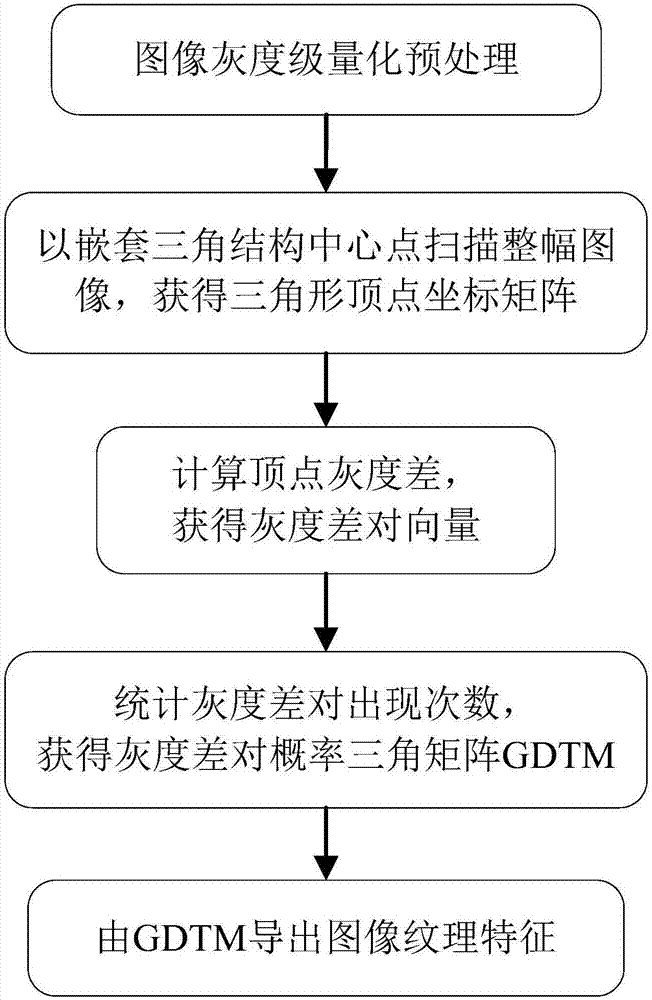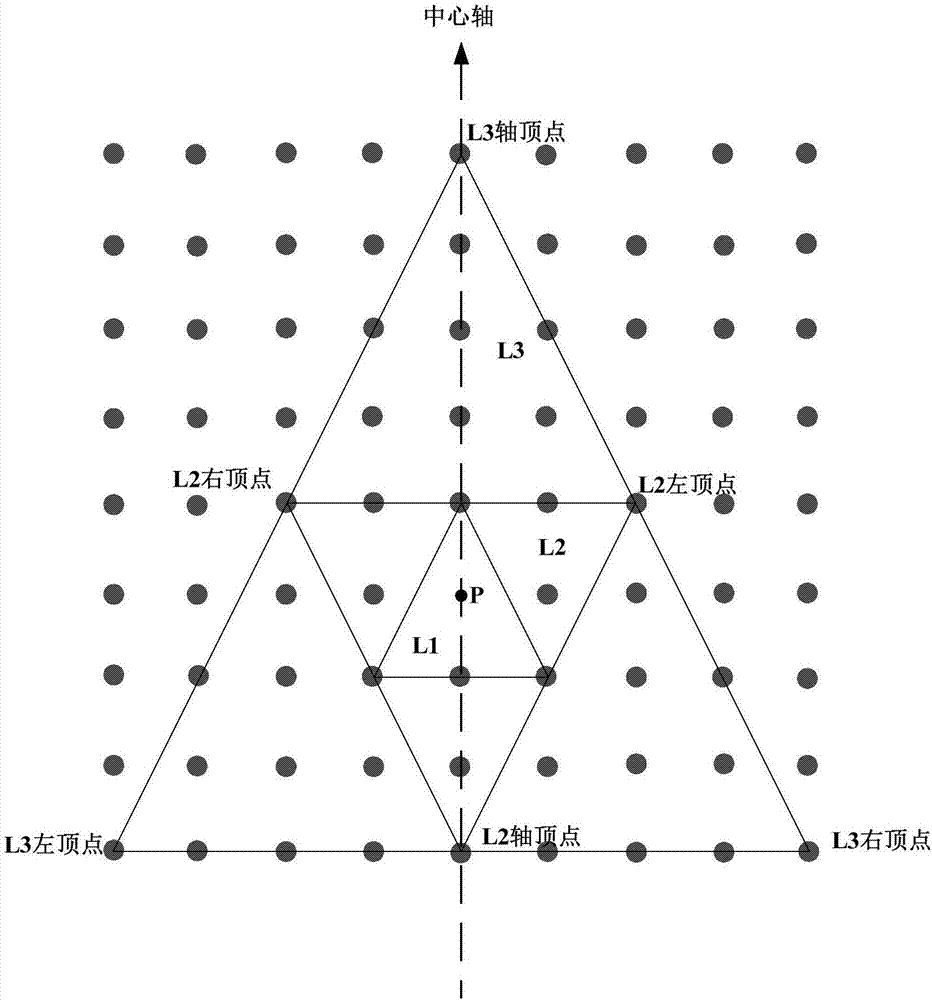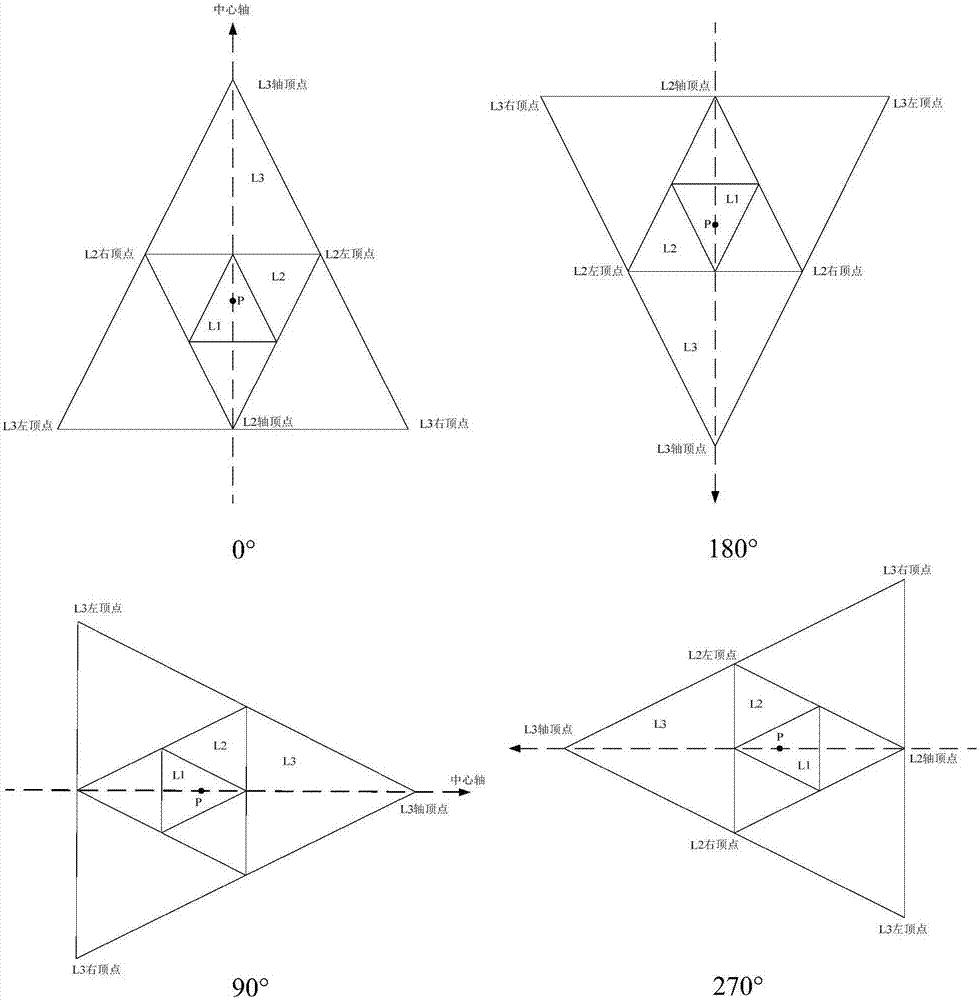Image texture feature extraction method based on nested triangular structure
A triangular structure and image texture technology, applied in image data processing, image analysis, instruments, etc., can solve the problems of incomplete texture image information, missing image information, etc., to reduce the amount of calculation of statistical features, less sampling points, and good stability sexual effect
- Summary
- Abstract
- Description
- Claims
- Application Information
AI Technical Summary
Problems solved by technology
Method used
Image
Examples
Embodiment
[0061] Such as figure 1 As shown, the flow chart of a new image texture feature extraction method GDTM, in order to evaluate the stability and discrimination ability of the feature obtained by the method, the embodiment simulation experiment uses the UIUC texture library, which contains 25 types of textures, and each type contains 40 A 640×480 pixel grayscale texture image, Figure 4 This is an example image of this embodiment. In the experiment, 30 of the 7 types of pictures were selected as training pictures, and the remaining 10 pictures were used as test pictures. Figure 5 In order to calculate the specific execution flow of a picture GDTM matrix, the specific steps of the embodiment are as follows:
[0062] Step 1: Preprocess each original texture image in the UIUC library, and quantize the gray level of the image into G-level gray levels. In this embodiment, G=16.
[0063] Step 2: Scan the preprocessed picture pixel by pixel in row and column order to obtain the vert...
PUM
 Login to View More
Login to View More Abstract
Description
Claims
Application Information
 Login to View More
Login to View More - R&D
- Intellectual Property
- Life Sciences
- Materials
- Tech Scout
- Unparalleled Data Quality
- Higher Quality Content
- 60% Fewer Hallucinations
Browse by: Latest US Patents, China's latest patents, Technical Efficacy Thesaurus, Application Domain, Technology Topic, Popular Technical Reports.
© 2025 PatSnap. All rights reserved.Legal|Privacy policy|Modern Slavery Act Transparency Statement|Sitemap|About US| Contact US: help@patsnap.com



